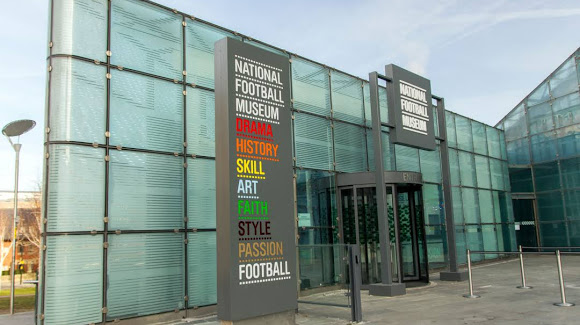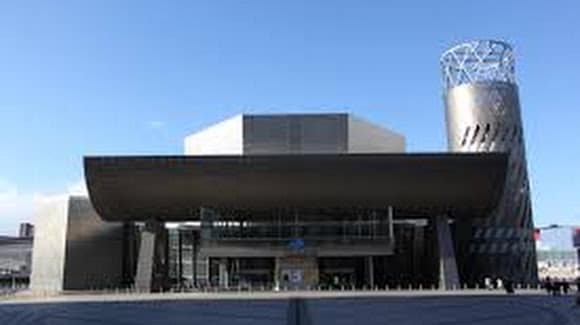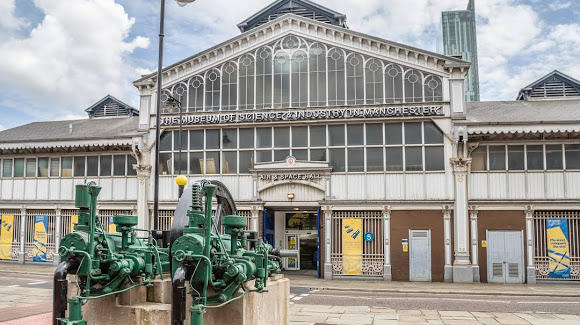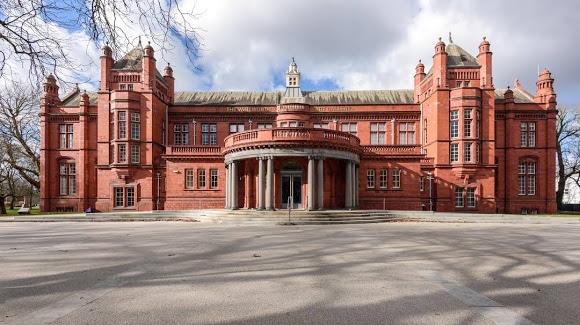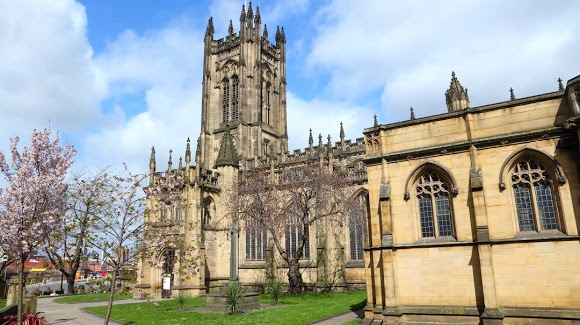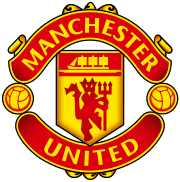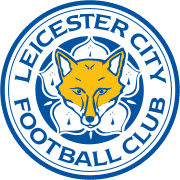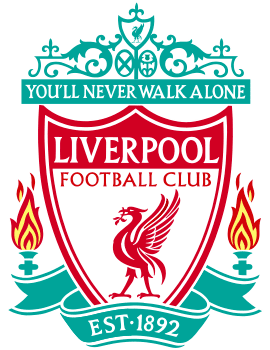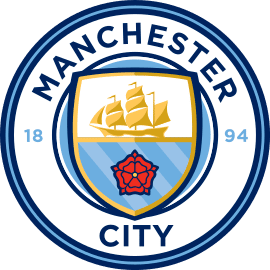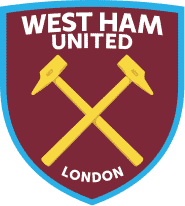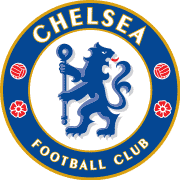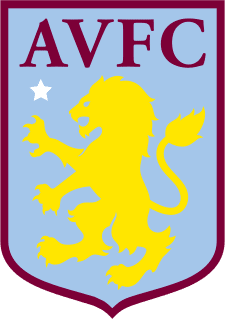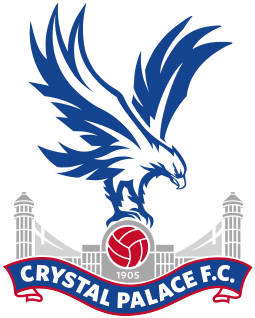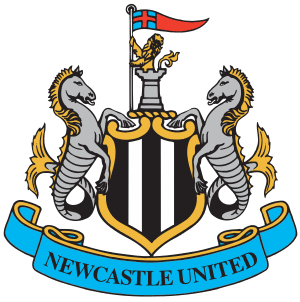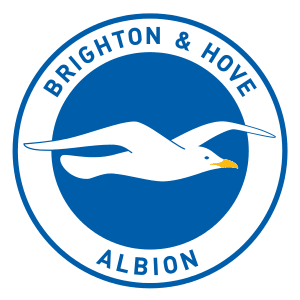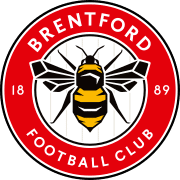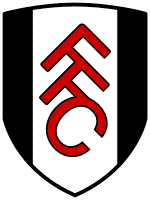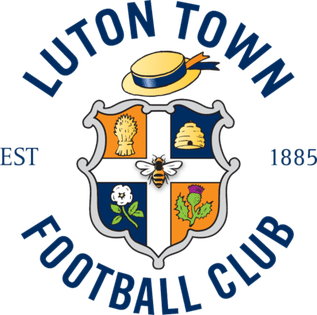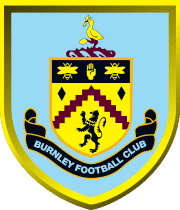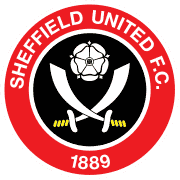Manchester United Tryouts & Club Guide: History, Stadium, Players, and More!

Welcome!
Discover the world of soccer with fcscout.com, your go-to scout for club tryout information, club guides, player profiles, in-depth product reviews, and more. We’re dedicated to exploring and revealing the best in each domain, empowering you with knowledge to make informed choices.
Thank you for being here!
Hi, I’m Carlos! A coach, sports enthusiast, and the founder of FCScout.com.
I fell in love with the game at a very young age like many of you. I’ve been following and playing soccer for many years.
Throughout my career, I always enjoyed helping soccer players chase their dreams, which is why I started this website. I wanted to reach a larger audience outside of my local area and fcscout.com was born.
This website is a platform I will be using to update club pages on any tryouts, stadiums, players, tech, and more from clubs around the world. I also create free recruitment profiles for players looking to have that extra competitive edge when reaching out to clubs.
That’s it. That’s my pitch for you to stick around (or browse the site as you please).
This is already too much text for a “see more” drop-down button thing. If you want to reach out to me, head on over to my contact page 🙂

Manchester United Football Club is a professional football club based in Old Trafford, Greater Manchester, England, that competes in the Premier League, the top flight of English football.
Manchester United Youth Development System
The Manchester United Academy was established in 1998, following the reorganisation of youth football in England, but has roots stretching all the way back to the 1930s with the establishment of the Manchester United Junior Athletic Club (MUJAC). and has been responsible for producing some of Manchester United’s greatest ever players, including the club’s top five all-time appearance makers, Ryan Giggs, Bobby Charlton, Bill Foulkes, Paul Scholes and Gary Neville, and the new wave of home-grown talents known as Fergie’s Fledglings. The current academy is based at the club’s Aon Training Complex, an 85-acre (340,000 m2) site in the Manchester suburb of Carrington.

The Manchester United youth team is statistically the most successful in English football, with nine players in the English football Hall of Fame (Duncan Edwards, Sir Bobby Charlton, George Best, Nobby Stiles, Mark Hughes, Ryan Giggs, Paul Scholes, David Beckham and Johnny Giles). Manchester United also have the best FA Youth Cup record, winning on 10 occasions out of 14 final appearances.
The academy comprises age-group teams ranging from Under-9s up to the flagship Under-18s, who currently compete in Group C of the Premier Academy League and in the FA Youth Cup. The Under-16s and Under-18s typically play their academy league games at 11am on Saturday mornings at Carrington, while Youth Cup games are generally played at either Altrincham’s Moss Lane ground (where the under-23s play their home games) or the club’s 76,000-capacity Old Trafford home, in order to cater for the greater number of supporters these fixtures attract.
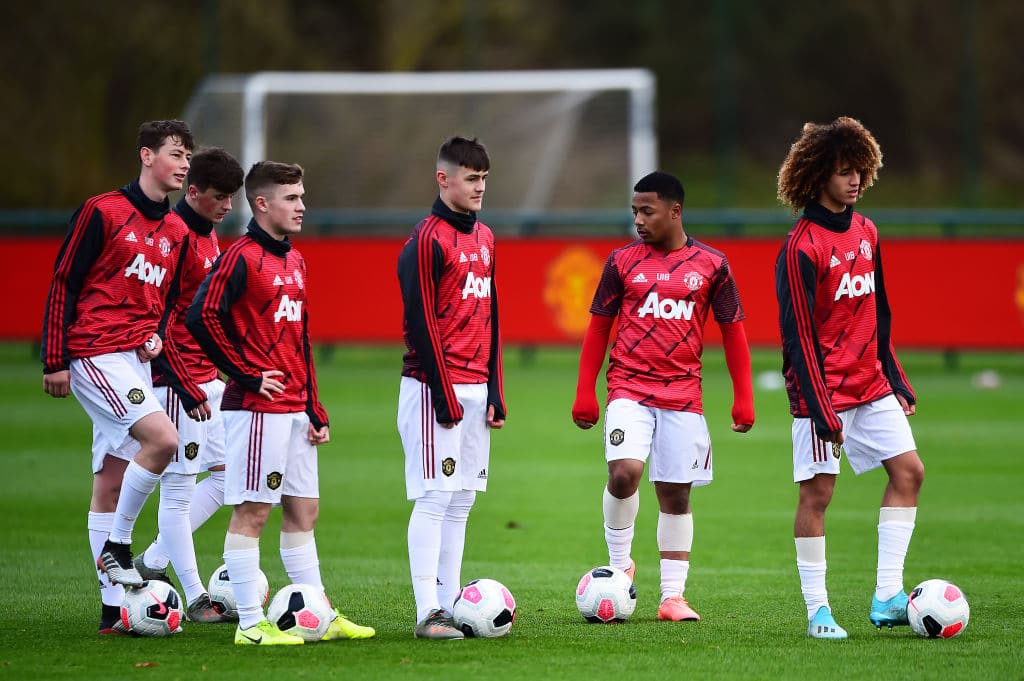
In 2007, Manchester United Under-18s won the Champions Youth Cup, intended to be an analogue to the FIFA Club World Cup for youth sides, beating Juventus 1–0 in the final in Malaysia. It was their first and only title, since the tournament was scrapped after only one edition.
Manchester United Academy
Manchester United Academy takes great pride in the development of young people who aspire to play for Manchester United.
They operate a unique, age-appropriate programme and provide players with experiences that will help them to understand the values of Manchester United, to grow and succeed in life, and to play professional football at the highest level.
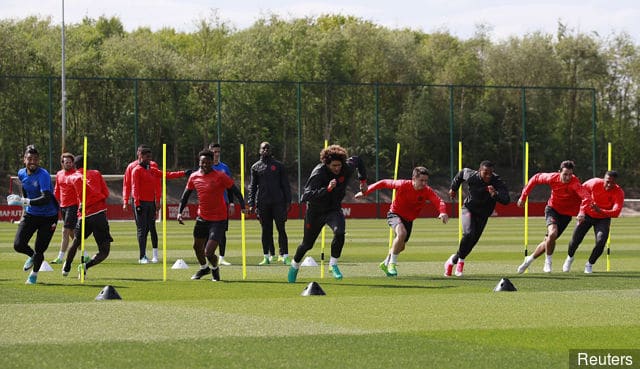
To do that, Manchester United employ experts with a wide range of skills both on and off the pitch, who are all dedicated to preserving the joys of childhood and avoiding premature professionalism. To view a complete list of current staff, please click here.
Their ambition is to be a true family and community Academy and to always act with honesty, integrity, respect and humility.
Supporting and trusting young people is embedded into the history and the culture of Manchester United and are renowned worldwide as a leading youth development organization.
Latest Manchester United U-18 can be found here.
Latest Manchester United U-23 can be found here.
How do you get a trial at Manchester United?
Manchester United does not hold open trials. Their scouting operation works so that before any player comes to our club, they will have been initially assessed by one of their scouts. Premier League regulations severely restrict the number of players whom they can coach at each age group. Consequently it is not easy to obtain a place in their Academy.
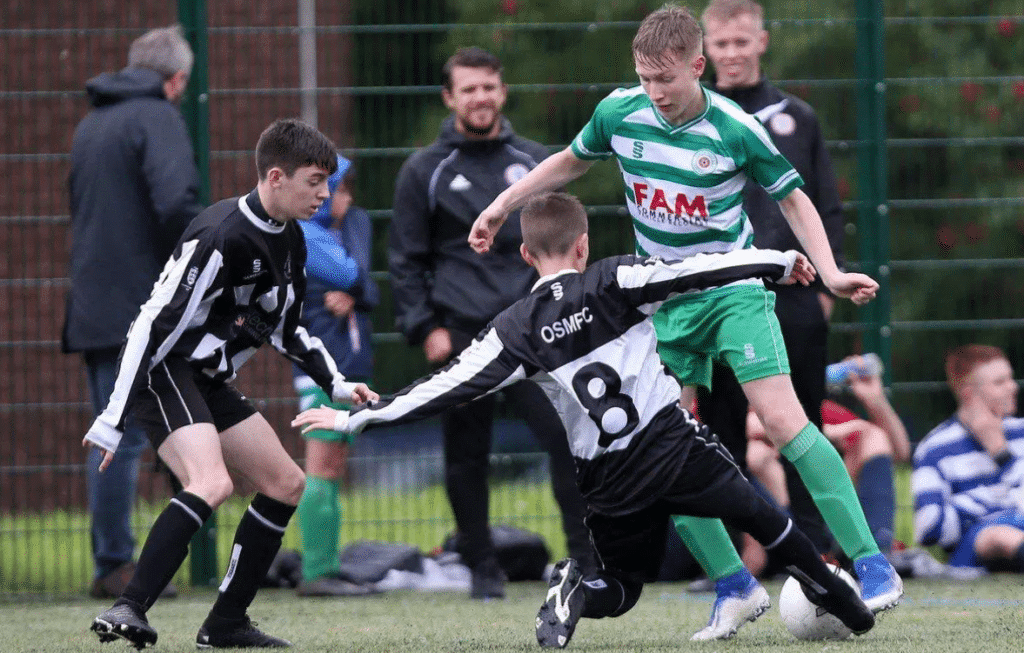
However, they have a network of scouts throughout the country who continually monitor young players. They hope that young players who aspire to become professional footballers will generally be involved with their town or district team and/or a good Sunday team. It is by watching such games that their scouts become aware of the players of outstanding potential. They receive regular reports on players throughout the country. Manchester United shall do everything in their power to attempt to bring players with high potential to our club for trials and assessment. You can be assured that those playing at a good level of competitive football will be assessed by one of their regional scouts.
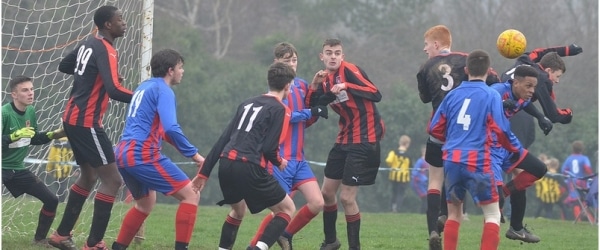
There is no easy route to becoming a footballer. It is extremely important that you develop skill. The first step is to get involved with a team playing in good quality competition. For school children, this would not only mean being in the school team, but also representing teams in your town, county, district, and even country. Good quality junior football is very helpful, especially in regions where organised schools football is not available. Playing with other top quality players can only help develop your potential. If you are aged 15-18, you need to be playing at the highest level of football within your age band and with other good quality players.
Manchester United Academy Scholarships?
Unfortunately, there are no scholarship application forms. Scholarships are offered to young players based on their ability and potential as assessed by members of staff. Manchester United have to make an application for scholarship places on an annual basis, many months before players are ready to leave school or college. Most players have already been signed by their club on an Academy Registration form.
Is it possible to play for Manchester United if I live outside the UK?
There are stringent rules and regulations set by the Premier League for trials for boys born outside England. In summary, they are:
• The earliest time a boy can attend an Academy for assessment is at the start of his 15th year. We are obliged to include restrictions on suitability – that a boy can only trial if he is recommended by one of our scouts or contacts. If he is deemed suitable for assessment he still cannot register for an Academy unless he resides within 1½ hour of its base – even then the boy must not be moving into the area for that purpose i.e. it can only be for family and not football reasons e.g. maybe the parent(s) moves jobs/positions to enhance his/her career.
• If the boy is an EU/EEA citizen then he can sign as a scholar aged 16, not before.
• If the boy is not an EU/EEA citizen then the earliest he can sign is aged 18 and even then it is dependent upon eligibility for a work permit.
Manchester United scouts attend international youth tournaments around the world. In this way they see players that may be of a suitable standard to join their Academy.
Manchester United Reserve Team
Manchester United Football Club Under-23s is the most senior of Manchester United’s youth teams and the club’s former reserve team. They play in the Premier League 2, the highest tier of the Professional Development League. The team is effectively Manchester United’s second-string side, but is limited to three outfield players and one goalkeeper over the age of 23 per game following the introduction of new regulations from the 2016–17 season, an increase from the age of 21 which was introduced in 2012–13.
They were champions of the former Premier Reserve League five times (in 2002, 2005, 2006, 2010 and 2012) between its introduction in 1999 and its dissolution in 2012. The team also won the 2012–13 Professional U21 Development League 1 in its inaugural season, and again in 2015 and 2016. The team also participates in the regional Manchester Senior Cup and the Lancashire Senior Cup. From 2019–20 edition, they also participate in the nationwide EFL Trophy along with senior teams from levels 3 and 4 of the English football league system, as teams from levels 1 and 2 are restricted to players aged 21 and under.
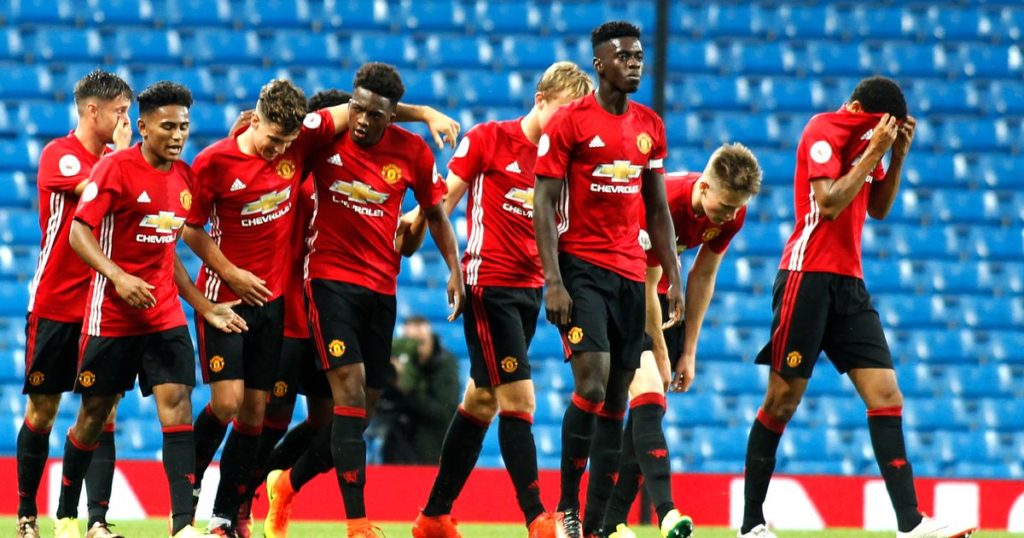
The team’s current manager is Neil Wood, who took over from Ricky Sbragia in 2019. Sbragia had been manager since 2017 and had also been manager for the reserves between 2002–2005. Sbragia had taken over from Nicky Butt, an academy graduate in the 1990s who played for United until 2004. Butt held the role on an interim basis for the 2016–17 season after Warren Joyce was appointed Wigan Athletic manager on 2 November 2016. Joyce, who took over from Ole Gunnar Solskjær as manager of the reserves in December 2010, was previously the manager of Royal Antwerp, Manchester United’s feeder club in Belgium.
From November 2008 to August 2013, the team played its home matches at Moss Lane in Altrincham, the home of Altrincham F.C. For the 2013–14 Under-21 Premier League season, the team has played the majority of its home matches at Salford City Stadium in Barton-upon-Irwell. Since 2014–15, the team play its home matches at Leigh Sports Village. Rules set out by the Premier League state that at least three home league games per season must be played at the club’s main stadium, Old Trafford. In previous seasons, the team has played at the Victoria Stadium, the home of Northwich Victoria, and Ewen Fields, the home of Hyde United.
Latest Manchester United U-23 can be found here.
Manchester United Emerging Talent Programme
Manchester United is introducing a new Emerging Talent Programme to increase engagement with local schools and grassroots clubs across Manchester and the North West.
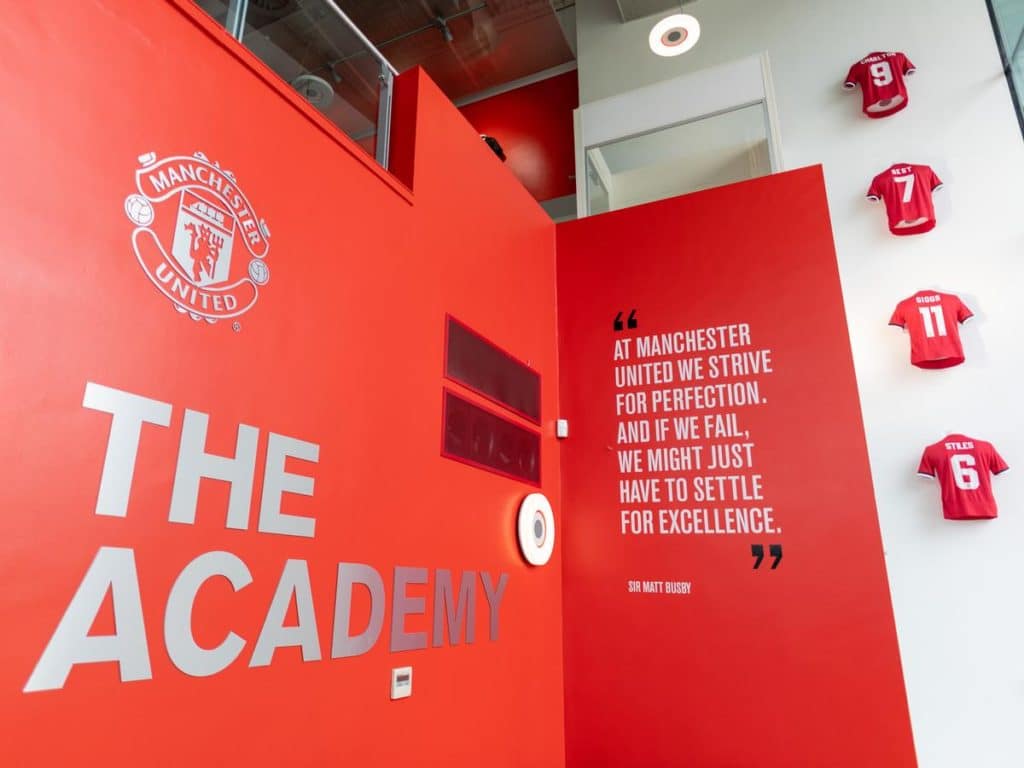
The programme will be a bridge between the community and curriculum-based charitable work undertaken in over 50 local schools by Manchester United Foundation, and the club’s elite youth academy, which is fed by the club’s industry-leading scouting network and brings in the best talent from around the world.
The Emerging Talent Programme will deliver a range of projects in order to identify talented footballers across the region and support them further by offering them the opportunity to potentially attend a structured development programme at the club’s Emerging Talent Centre, based at the Aon Training Complex.
To view all partner schools, please click here.
Manchester United Recruitment Trials
At the time of this writing, there is no official publishing’s on Manchester United trials. Please come back at a later date while we monitor this club or click here to visit their official news section.
EXPLORE MORE CLUBS!
Explore more professional clubs by continent.
Manchester United History
Early years (1878–1945)
Newton Heath LYR Football Club was founded in 1878 by the Carriage and Wagon section of the Lancashire and Yorkshire Railway (LYR) depot in Newton Heath. On 20 November 1880, the team competed in their first documented match, wearing the colors of the railway company – green and gold – and were defeated by the reserve squad of Bolton Wanderers 6–0.
The club was a founder member of the regional football league The Combination in 1888. Newton Heath joined the Football Alliance after the league’s demise, which lasted for three seasons before being absorbed into the Football League. To begin the 1892–93 First Division season, the team had become independent of the railway company and had lost “LYR” from its name by this point in time. The team was demoted to the Second Division after two seasons. The club was served with a winding-up order in January 1902, with a debt of £2,670 (equivalent to £290,000 in 2021).
With four local businessmen ready to contribute £500 in return for a direct interest in the management of Manchester United, including John Henry Davies (who became the club president), the club was renamed on April 24, 1902 as Manchester United. During the reign of Ernest Mangnall, the team finished second in 1906 and was promoted to the First Division, where they won their first league championship in 1908. A year later, the club won its inaugural charity shield and its first FA Cup crown. When Manchester United won the First Division in 1911, Mangnall departed the club to join Manchester City at the end of the season.
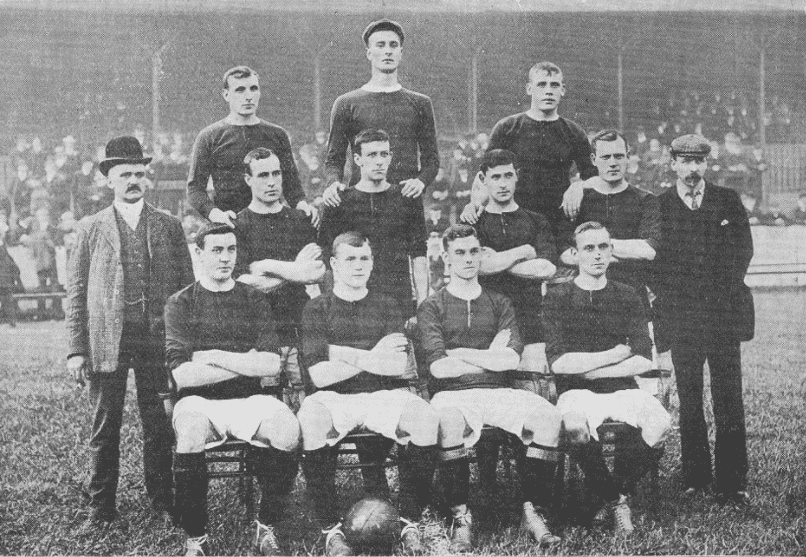
The club was relegated to the Second Division in 1922, three years after the start of football following the First World War. Manchester United became a yo-yo club in 1931 when they were relegated a second time and finished as low as 20th in the Second Division in 1934. If James W. Gibson had not invested £2,000 and seized ownership of Manchester United in December 1931, the club would have gone bankrupt in October 1927, when the club’s benefactor John Henry Davies died of pneumonia. The team finished 14th in the First Division in 1938–39, the penultimate year of football before World War II.
Busby years (1945–1969)
Matt Busby was appointed manager of Manchester United in October 1945, just as the sport was preparing to resume. He wanted unprecedented levels of control over player transfers, team selection, and training sessions. In 1947, 1948, and 1949, Busby finished second in the league, and in 1948, he won the FA Cup with the team. The club’s first league title in 41 years was earned in 1952, when it triumphed in the First Division. The team, who had an average age of 22 at the time, was dubbed the “Busby Babes” by the media as a tribute to manager Busby’s belief in his young players. When Manchester United initially entered the European Cup in 1957, The Football League objected since Chelsea had been denied entry the year before. Despite losing to Real Madrid in the semi-finals, Anderlecht’s 10–0 win over the Belgian champions remains the club’s greatest victory ever.
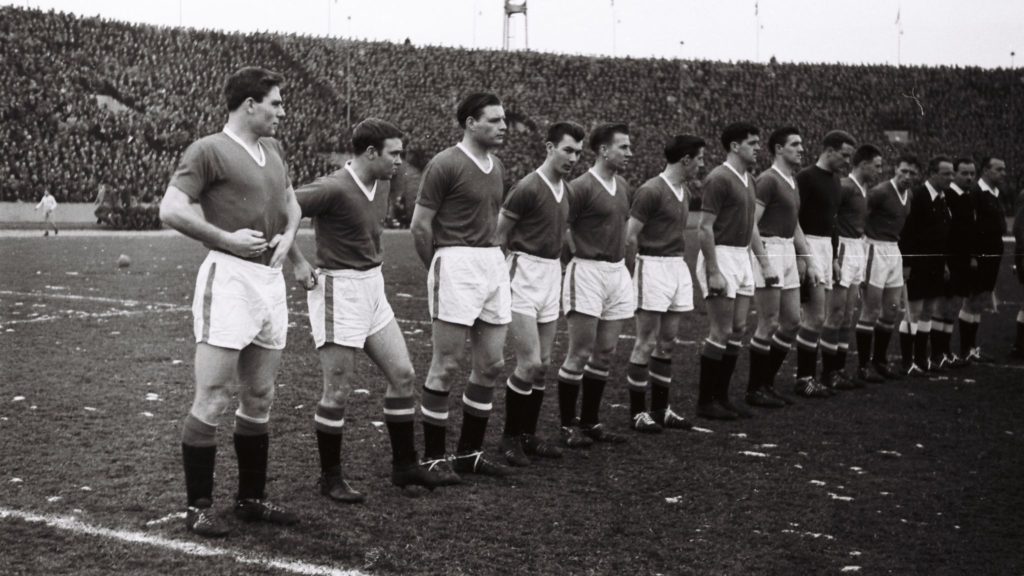
The plane carrying Manchester United players, officials, and journalists crashed after refueling in Munich, Germany, on the way back from their European Cup quarterfinal victory over Red Star Belgrade the next season. There were 23 people killed and dozens more injured in the Munich aviation tragedy on February 6, 1958, including eight players: Geoff Bent, Roger Byrne, Eddie Colman, Duncan Edwards, Mark Jones and Billy Whelan. While manager Matt Busby made it out of the hospital alive, eight of his players did not. With the help of United Museum tour leader John Quinn, we examine the lives of the players whose lives were tragically cut short 62 years ago. It was Jimmy Murphy, the club’s assistant manager, who assumed charge of the team while Busby recovered from his injuries, and they reached the FA Cup final, where they lost to Bolton. UEFA invited the club to compete in the 1958–59 European Cup alongside Wolverhampton Wanderers in memory of the team’s tragedy. Due to lack of qualification, despite support from FIFA, the Football League ruled that the club could not compete. After recruiting players like Denis Law and Pat Crerand, as well as the side’s next crop of young players, including George Best, Busby gradually rebuilt the team through the 1960s, culminating in an FA Cup victory in 1963. After finishing second the next year, the team went on to win the league championship in 1965 and again in 1967. Manchester United overcame Benfica 4–1 in the European Cup final in 1968 with a side that featured three European Footballers of the Year: Bobby Charlton, Denis Law, and George Best. United was the first English (and second British) club to win the European Cup. For the 1968 Intercontinental Cup, they faced Estudiantes of Argentina in Buenos Aires before drawing 1–1 at Old Trafford in the second leg three weeks later. In 1969, Busby stepped down as manager and was succeeded by Wilf McGuinness, the reserve team coach of Manchester United.
1969–1986
It was decided that Busby would return to his role as manager and McGuinness would take over as coach of the reserve squad following a disappointing season in 1969–70. Only 18 months into his tenure as manager, Frank O’Farrell was replaced by Tommy Docherty, who took over in December 1972. The triumvirate of Best, Law, and Charlton had long since left Manchester United by the time Docherty saved them from relegation in 1973. Southampton won the FA Cup final in 1976, defeating the team in the semi-finals. In 1977, they made it to the final, defeating Liverpool 2–1. Docherty was fired shortly thereafter after his liaison with the club physiotherapist’s wife was made public.

During the summer of 1977, Dave Sexton succeeded Docherty as manager. However, even with the signings of prominent players such as Joe Jordan and Gordon McQueen as well as Gary Bailey and Ray Wilkins, the club was unable to accomplish any meaningful achievements. Despite the fact that the squad won its final seven games while Sexton was in charge, he was fired in 1981. His successor, Ron Atkinson, shattered the British transfer record by signing Bryan Robson from West Brom. In 1983 and 1985, Manchester United won the FA Cup under Atkinson. After winning 13 of its first 15 games, the team was expected to win the league in 1985–86, but ended up finishing in fourth place. Atkinson was fired the next season when the team was in danger of being relegated by November.
Ferguson years (1986–2013)
When Atkinson was sacked, Alex Ferguson and Archie Knox joined from Aberdeen and led the team to an 11th-place finish in the Premier League. Despite finishing second in 1987–88, the team was back in the bottom ten the following year, finishing 11th. In the 1990 FA Cup Final replay, after a 3–3 tie, victory over Crystal Palace rescued Ferguson’s job, which had been on the edge of being terminated. The next year, Manchester United won its first Cup Winners Cup and competed in the 1991 UEFA Super Cup, defeating European Cup holders Red Star Belgrade 1–0 in the final at Old Trafford. Manchester United. Nottingham Forest were beaten 1–0 in the 1992 League Cup final at Wembley by Manchester United. For the first time since 1957, the team won both the Premier League title and the FA Cup in 1993, completing the first ever “Double” in the club’s history. For the first time in their history, Manchester United won the FA Cup and the Premier League back-to-back times in the 1995–96 and 1996–97 seasons.

When Manchester United won the Premier League, FA Cup, and UEFA Champions League in the same season in 1998–99, they became the first side to do it in the same year. Teddy Sheringham and Ole Gunnar Solskjaer scored late goals to win the 1999 UEFA Champions League Final against Bayern Munich, which is considered one of the greatest comebacks in the history of the game. After defeating Palmeiras 1–0 in Tokyo, the team also won the Intercontinental Cup. For his contributions to the sport, Ferguson was awarded a knighthood.

Photograph: Michael Steele/EMPICS Sports Photo Agency
In the seasons 1999–2000 and 2000–01, Manchester United won the league championship once more. Prior to 2002–03, the team finished third in 2001–02. After defeating Millwall 3–0 in the FA Cup final at Cardiff’s Millennium Stadium, they won the trophy for a record 11th time. Manchester United missed out on the Champions League knockout stages for the first time in more than a decade in the 2005–06 season, but rebounded to finish second in the Premier League and win the Football League Cup Final against Wigan Athletic.
To go along with their 17th English league triumph in 2006–07, the club reclaimed the Premier League crown in 2007–08 before completing the European double by defeating Chelsea in the 2008 UEFA Champions League Final in Moscow by a score of 6–5. This was Ryan Giggs’ 759th appearance for the club, breaking Bobby Charlton’s record of 758 appearances. To cap off a successful 2008–09 season, the team was crowned Premier League champions by winning the 2008 FIFA Club World Cup. Real Madrid paid an all-time high of £80 million for Cristiano Ronaldo that summer. Manchester United won the League Cup for the first time in 2010 after a 2–1 win over Aston Villa at Wembley.
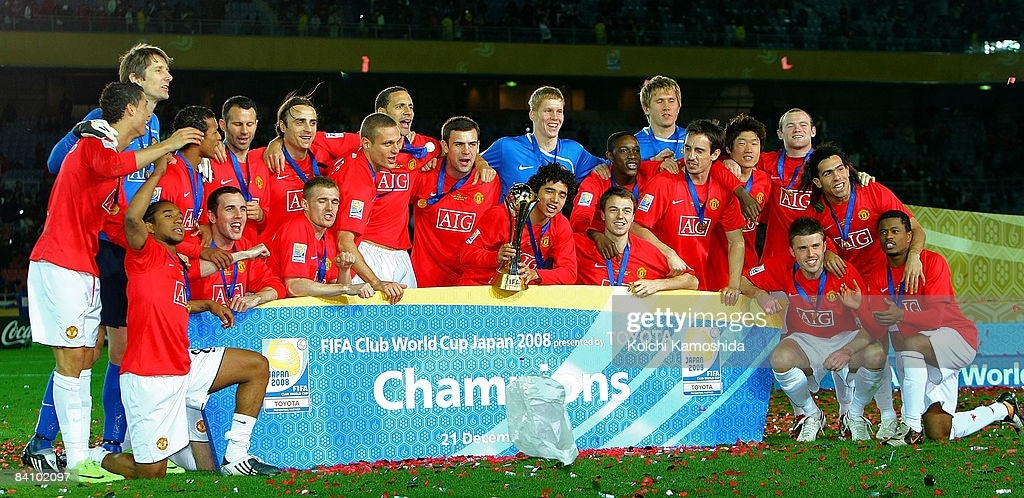
On May 14, 2011, United, who had been runner-up to Chelsea in the 2009–10 season, won their record-breaking 19th league title with a 1–1 away draw against Blackburn Rovers at Old Trafford. In 2012–13, the club won a record-extending 20th league title after defeating Aston Villa 3–0 at home on April 22.
2013–Present
He said he will step down as manager at the end of the season, but that he would continue as a director and ambassador for the club. The following day, the club announced that David Moyes, the manager of Everton, had signed a six-year contract with the club. The following 10 months saw Ryan Giggs take over as interim player-manager after David Moyes was fired after the club failed to defend their Premier League championship and failed to qualify for the UEFA Champions League since 1995–96. It was also the first time since 1990 that Manchester United had not qualified for a European competition as they missed out on the Europa League. On May 19, 2014, it was announced that Louis van Gaal, with Ryan Giggs as his assistant, will take over as Manchester United manager from David Moyes for a three-year period. On May 28, 2014, Malcolm Glazer, the patriarch of the Glazer family that owns the club, died.
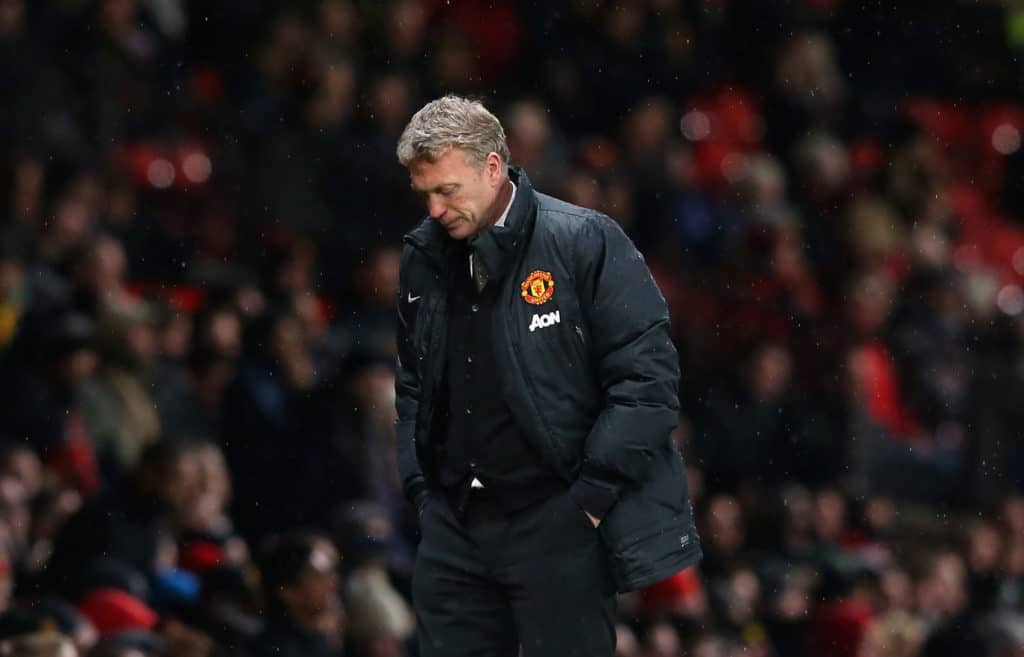
United qualified for the Champions League for the second time under Louis van Gaal in his first season in charge, but they were eliminated in the group stage during his second. Though Van Gaal brought in several high-profile players, Manchester United slipped farther behind in the title chase for the third year running, finishing sixth. However, Manchester United won their 12th FA Cup in the same season, their first since 2013.
Just two days after this triumph, Louis van Gaal was ousted as manager of Manchester United and replaced by José Mourinho, who signed a three-year contract. In Mourinho’s first competitive match in charge, United finished sixth in the league while winning the EFL Cup for the fifth time, the Europa League for the first time, and the FA Community Shield for the record 21st time. Manchester United qualified for the Champions League, despite not finishing in the top four, thanks to their Europa League victory. Sir Bobby Charlton, United’s all-time leading scorer, was surpassed by Wayne Rooney with his 250th goal for the club, however Rooney left at the end of the season to rejoin Everton.
Although their best finish since 2013, Manchester United finished second in the Premier League in the next season, 19 points behind Manchester City. Mourinho led the team to their 19th FA Cup final, where they lost 1–0 to Chelsea. With Manchester United in sixth place of the Premier League table and 19 points behind league leaders Liverpool, Mourinho was fired after 144 games in charge by the club on December 18th, 2018. Ole Gunnar Solskjaer, a former Manchester United striker, was named interim manager the next day.
Solskjr was appointed permanent manager of the club on a three-year contract on March 28, 2019, after an excellent run of 14 wins from his first 19 matches in charge, including a knockout of Paris Saint-Germain from the Champions League after losing the first leg 2–0. While in command, he led the club to third place in Premier League, as well the semi-finals of EFL Cup, FA cup and Europa League.
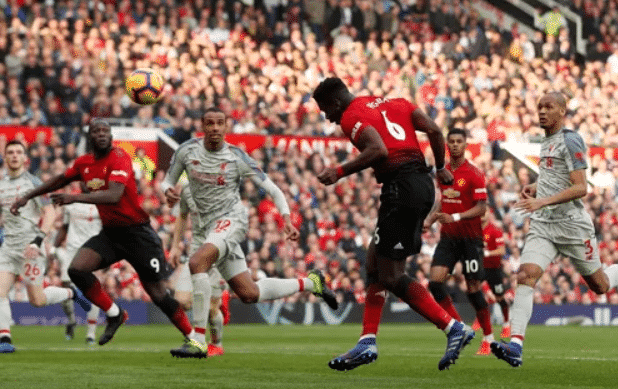
Colors and Badge
Though only the ship in full sail remains from the original crest, the club’s present crest is based on Manchester City Council’s coat of arms. Although the club crest was not featured until 1971, the devil is derived from the moniker “The Red Devils,” which appeared on club programmes and scarves in the 1960s. In 1970, the devil was incorporated into the club crest.
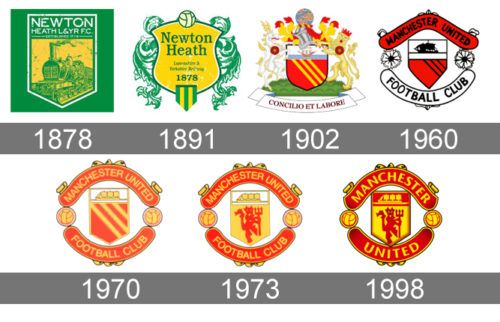
In 1879, four years before Newton Heath’s first competitive match, the club’s outfit was noted as ‘white with blue cord’. Photographs taken in 1892 show the Newton Heath team wore red-and-white quartered jerseys and navy blue knickerbockers, according to some sources. It was in 1896 that white shirts with navy blue shorts replaced the green and gold jerseys that had been used between 1894 and 1896. Renamed Manchester United FC in 1902, the club’s home suit has always been red shirts (with white shorts) and black socks (with white socks). There were only a few modifications made to the uniform until 1922 when the club went back to their 1909 FA Cup Final shirt design, which included a deep crimson “V” across the neck. Until 1927, they were still a part of the household.
Following their worst ever league finish of 20th place in the Second Division in 1934, Manchester United returned to their traditional red and white hooped change kit, and the hooped shirt was relegated to being a substitute. From 1959 to 1965, the black socks were replaced with white socks, which were occasionally replaced with red socks until 1971, when the club reverted to black. If the home team’s uniform clashes with the opponent’s, black shorts and white socks are worn with the home jersey. The preferred choice for the home uniform in 2018–19 was black shorts with red socks. For European games, which are often played on weeknights, white socks have been the favoured choice since 1997–98. Home kit for this season is a red jersey, white shorts, and black socks with red Adidas three stripes.

During the 2014–15 season, the club’s third kit was predominantly blue. All-black kit during the Treble winning 1998–99 season, a white shirt with black-and-red horizontal pinstripes between 2003-04 and 2005-06, a green-and-gold halved shirt between 1992 and 1994, and a blue and white striped shirt worn in 1994–95 and 1995–96 and once in 1996–97. Aside from 2008/09, when a commemorative all-blue jersey was introduced to honor the 40th anniversary of the 1967–68 European Cup triumphs, all third kits from 2006–07 through 2013–14 were the previous season’s away kit.

Stadium
Bank Street was deemed too constrictive after Manchester United won their first league title in 1908 and their first FA Cup a year later; six weeks before the club won its first FA Cup title, Old Trafford was identified as Manchester United’s home following the purchase of land for approximately £60,000. It was originally planned to have a capacity of 100,000 seats, but budgetary restrictions necessitated the reduction to 77,000 seats. Messrs. Brameld and Smith of Manchester built the structure. Wolverhampton Wanderers’ FA Cup semi-final win over Grimsby Town on March 25, 1939, drew 76,962 fans to the stadium, setting a new attendance record.
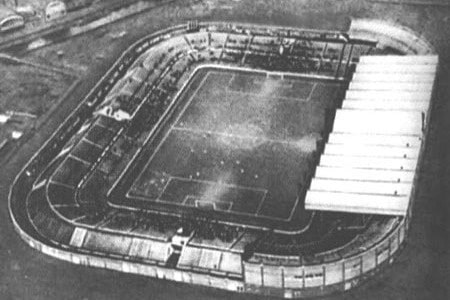
The South Stand’s central tunnel was all that was left after World War II bombing decimated the rest of the stadium. The War Damage Commission paid the club £22,278 in compensation after the war. United was charged £5,000 per year plus a nominal proportion of gate proceeds to play its “home” games at Manchester City’s Maine Road stadium while redevelopment was underway.
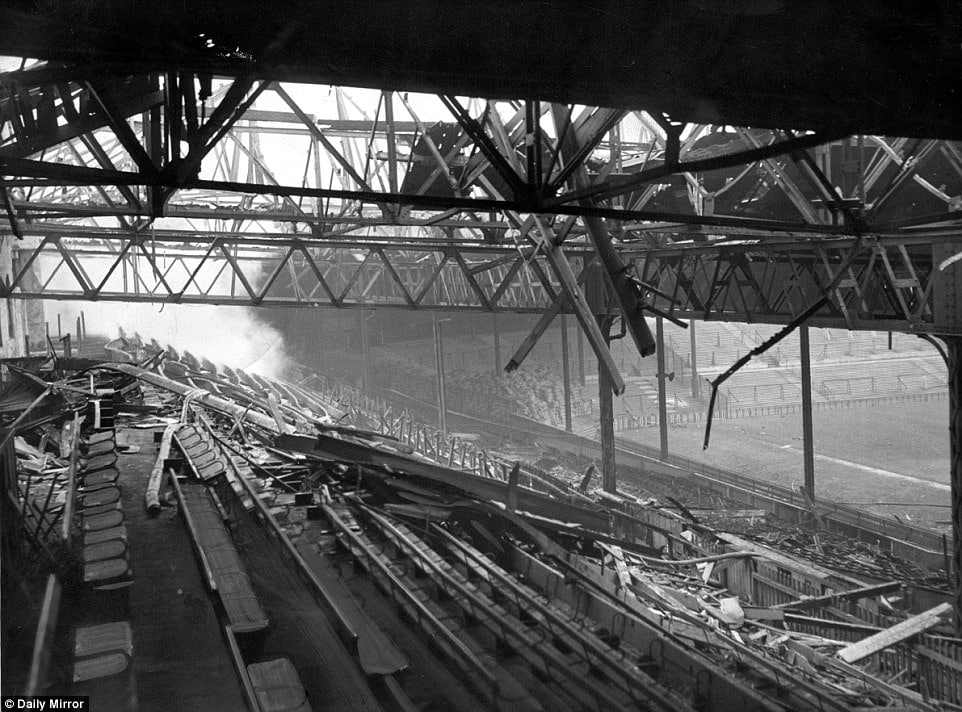
The Stretford End was the first to get a roof, followed by the North and East Stands. It was eventually replaced with a cantilevered structure since the roofs were supported by pillars that blocked many fans’ views (of a projecting beam or structure- fixed or supported at only one end.). Last but not least, a cantilevered roof was installed over the Stretford End in preparation for the 1993–94 campaign. Four 180-foot (55-meter) pylons, each housing 54 individual floodlights, were first put into service on March 25, 1957, at a cost of £40,000. In 1987, these were removed and replaced with a lighting system that is still in use today.
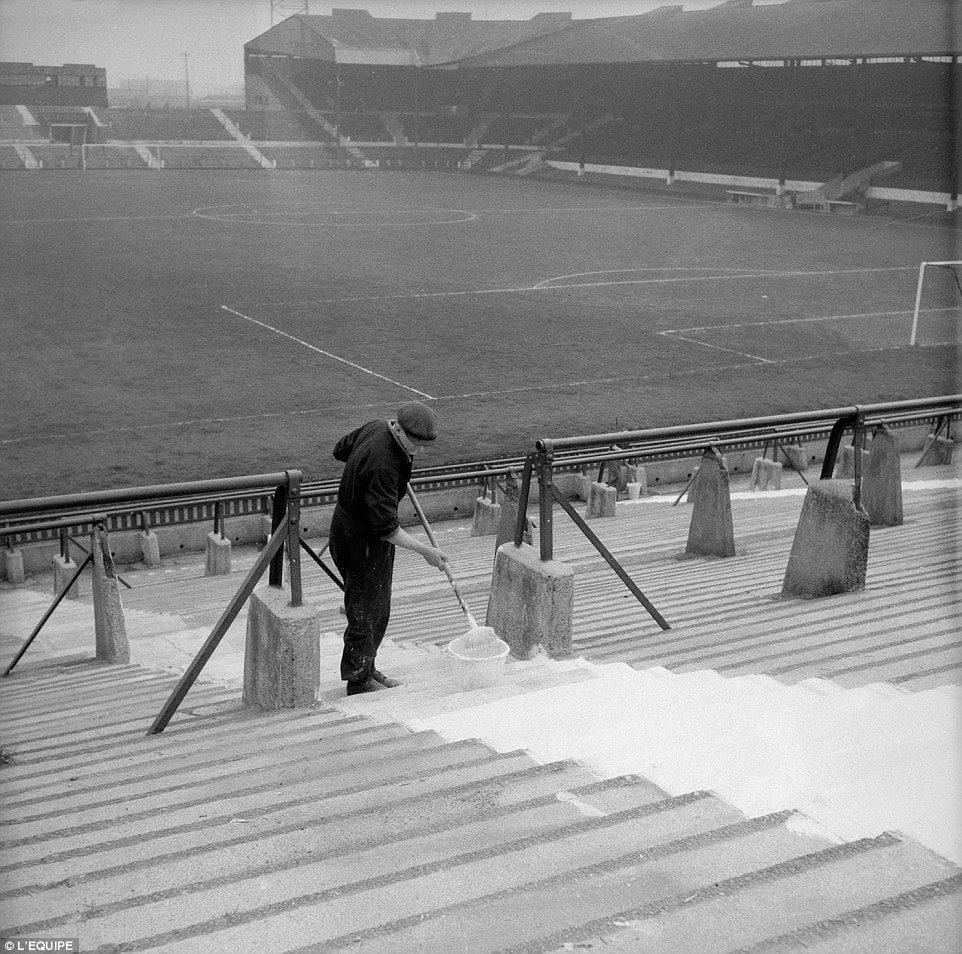
At Old Trafford, the Taylor Report mandated an all-seater stadium, which reduced the capacity of the stadium to about 44,000 in 1993. When the North Stand was renovated in 1995, it was able to hold about 55,000 people. From 1998 to 1999, the East and West stands were expanded, increasing capacity to roughly 67,000 seats; between July 2005 and May 2006, another 8,000 seats were added in the north-west and north-east quadrants with the addition of second levels in those areas.

On March 26, 2006, a record-breaking 69,070 people attended a Premier League match at Old Trafford. At its peak on March 31, 2007, Manchester United’s 4–1 victory over Blackburn Rovers drew 76,098 fans, with only 114 seats (0.15 percent of the stadium’s total capacity of 76,212) left empty, breaking the previous record. Rearranging the seating in 2009 reduced the stadium’s capacity from 75,957 to 255. Dortmund has the second-highest average attendance in European football behind Manchester United.
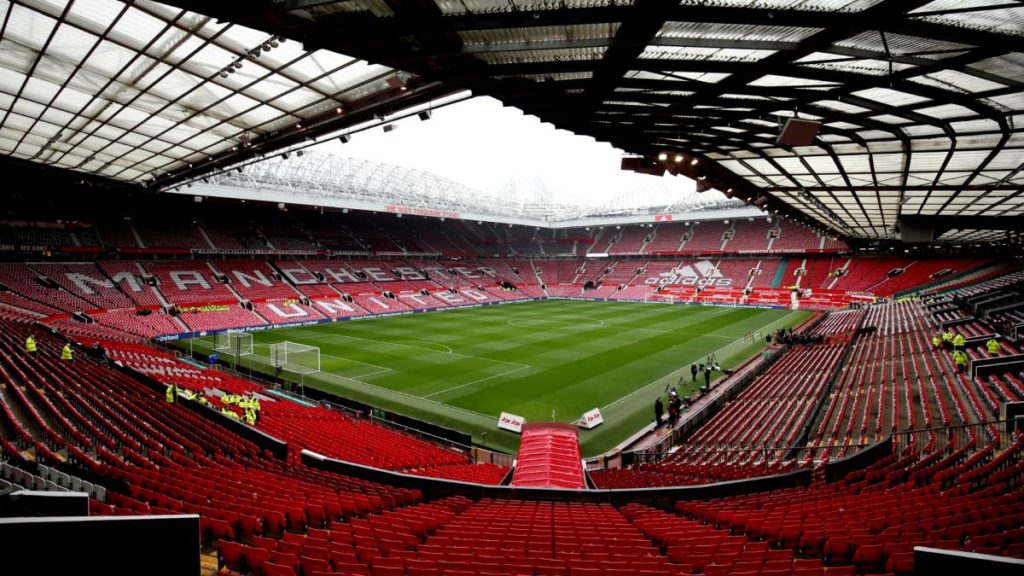
Support
United has one of the greatest average home crowds in Europe and is regarded as a major force in world football. More than 200 officially recognized branches of the Manchester United Supporters Club (MUSC) may be found in at least 24 countries, according to the club. To take advantage of this assistance, the club organizes international summer trips. Deloitte, a business consulting firm, estimates that there are 75 million Manchester United followers around the world. With approximately 72 million Facebook followers as of July 2020, the squad ranks third among sports teams in terms of social media popularity (after only Barcelona and Real Madrid). Manchester United, according to a research conducted in 2014, has the league’s loudest fans.
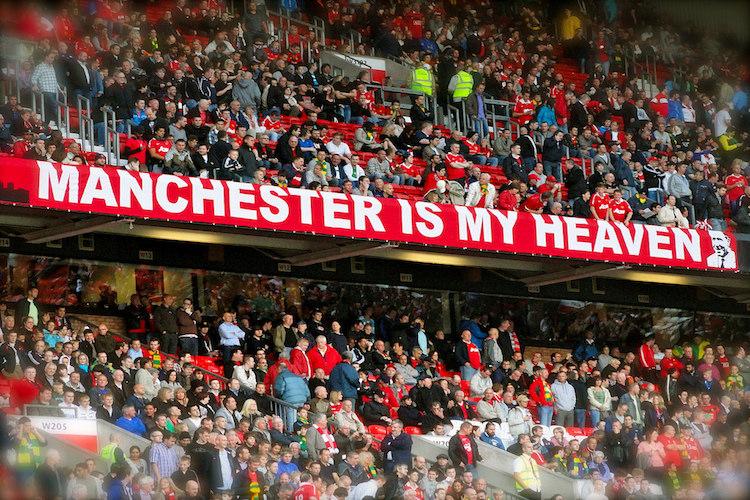
The Independent Manchester United Supporters’ Association (IMUSA) and the Manchester United Supporters’ Trust (MUST) represent the interests of the club’s supporters (MUST). F.C. United of Manchester was created by a group of fans following the takeover by the Glazer family in 2005. The “Stretford End” at Old Trafford is the home end and the traditional source of the most vociferous support for Manchester United.
City of Greater Manchester, United Kingdom
As the third-largest metropolitan area in England, Greater Manchester is home to more than 2.8 million people and is located in North West England. As one of the major metropolitan areas in the UK, it covers eleven metropolitan boroughs: Manchester and Salford as well as the cities of Bolton and Bury as well as Oldham and Rochdale. On April 1, 1974, as a result of the Local Government Act 1972, Greater Manchester was established as a functional city region.
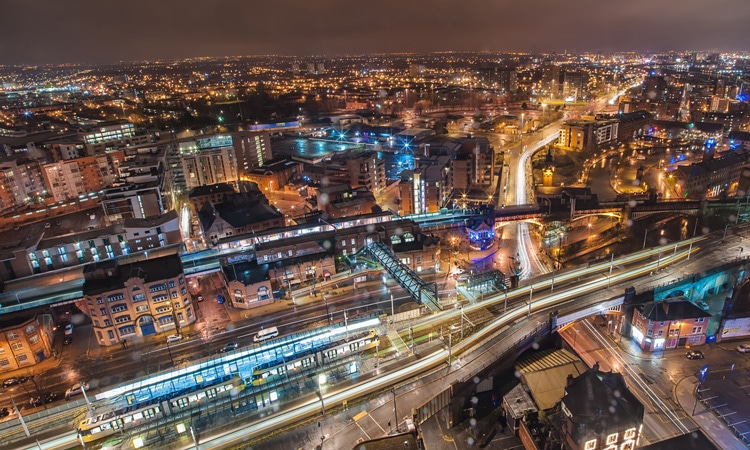
Nearly all of the Greater Manchester Built-up Area (GMBA) lies inside Greater Manchester’s 493 square miles (1,277 km2) of land area. Despite its physical isolation, the Manchester Ship Canal, which connects Salford and Trafford to the sea, is still open to shipping. Lancashire, Cheshire, Yorkshire, and Derbyshire are historic counties that border Greater Manchester, and the ceremonial counties of Cheshire (to the south and southwest), Derbyshire (to the southeast), West Yorkshire (to the northeast), Lancashire (to the north), and Merseyside (to the north) are all located within Greater Manchester (to the west).
As a result of the concentric urbanization and industrialization that took place mostly in the 19th century when the region flourished as the global center of the cotton industry, Greater Manchester contains a mix of densely populated urban centers, suburbs, semi-rural areas, and rural areas. Although Greater Manchester has a concentrated central business district, it is also a polycentric county, with eleven metropolitan districts, each of which includes a main town center and outlying suburbs, making it a diverse area.
Geography
Greater Manchester is a 493-square-mile landlocked county (1,277 km2). A swath of Pennines stretches over northern and eastern England, with the West Pennine Moors, North and South Pennines and Peak Districts in the northwest, northeast and east, respectively. In the west of the county, there are several coalfields (primarily sandstone and shales) while the Cheshire Plain encircles the south. Greater Manchester is drained by the Mersey, Irwell, and Tame rivers, all of which originate in the Pennines. The Douglas, the Irk, and the Roch are all tributaries of the major rivers that flow through the region. The Peak District National Park’s Black Chew Head, at 1,778 feet (542 meters) above sea level, is the highest point in Greater Manchester. It is located in the parish of Saddleworth.
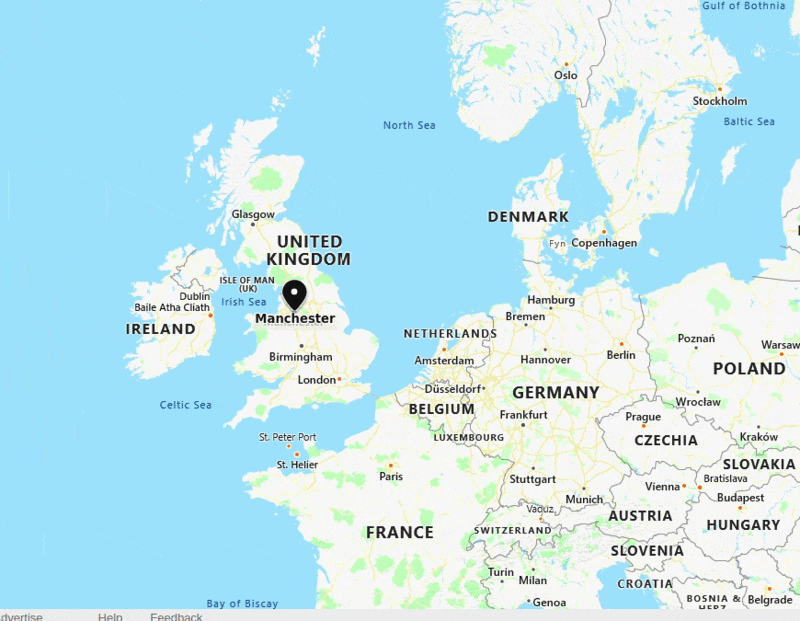
Climate | Weather
This area of Greater Manchester has a marine climate like most of the British Isles, which means that it has warm winters and low summer temperatures. The county receives an average of 806.6 millimeters (31.76 inches) of annual rainfall, compared to the UK’s 1,125.0 millimeters (44.29 inches) and 140.4 millimeters (5.53 inches) of yearly rainfall, respectively, as opposed to the UK’s 154.4 millimeters (6.08 in). Temperatures in the United Kingdom are somewhat above average. Because of the high humidity in the region, textile manufacturing in Greater Manchester was able to become more efficient and less prone to breakage. Winters in the built-up enclaves are few and far between due to the warming effect of cities like Manchester and Liverpool; however snowfall is more common in mountainous regions such as West Pennine Moors, South Pennine Mountains, and Peak District, and roads leading out of the county can become impassable during particularly heavy snowfall. Among these are the A62 via Standedge, the Pennine section of the M62, and the A57 Snake Pass, which leads to Sheffield. Woodford’s Met Office weather station, in the southernmost tip of Greater Manchester, recorded a temperature of 17.6°C (0.3°F) on January 8, 2010.
Greater Manchester Lifestyle


